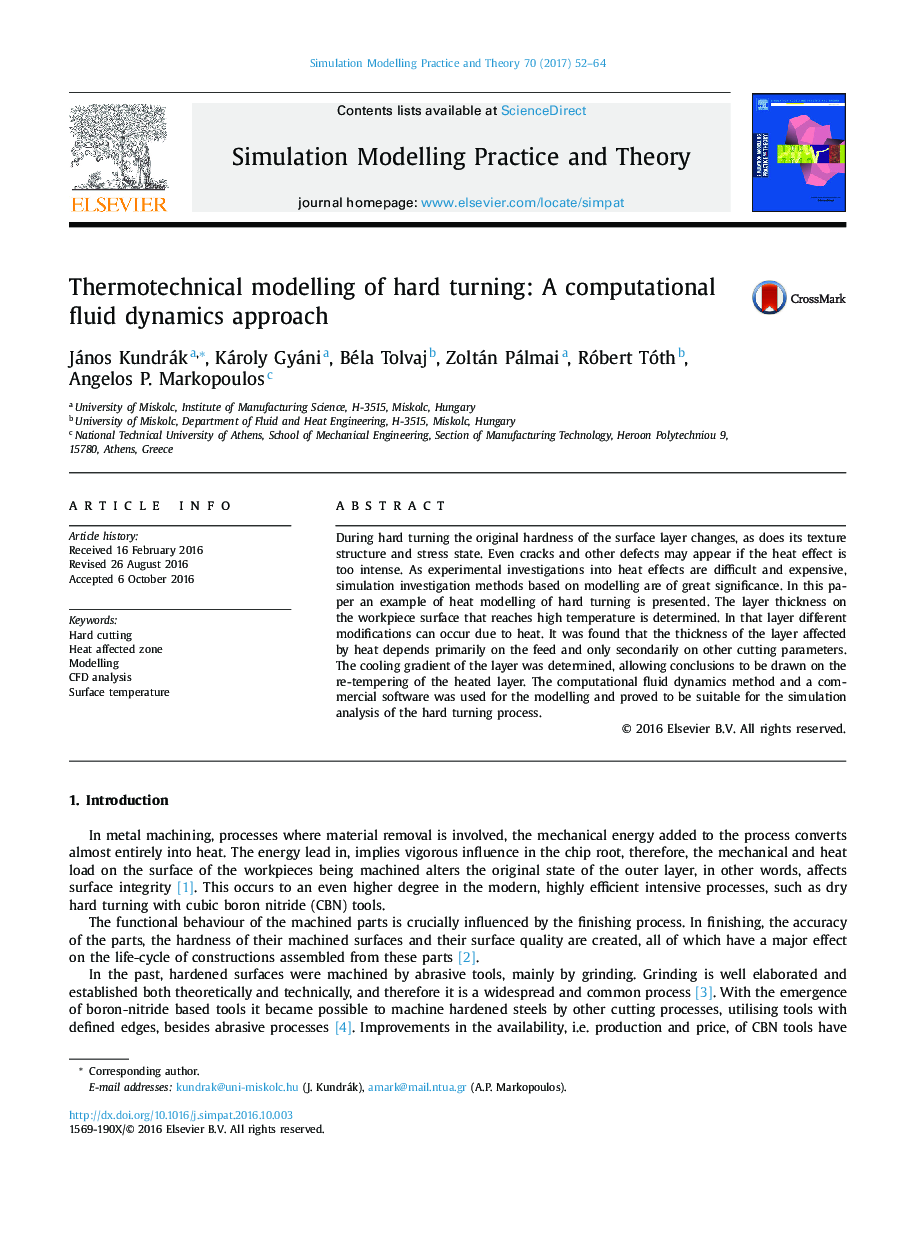| Article ID | Journal | Published Year | Pages | File Type |
|---|---|---|---|---|
| 4962734 | Simulation Modelling Practice and Theory | 2017 | 13 Pages |
Abstract
During hard turning the original hardness of the surface layer changes, as does its texture structure and stress state. Even cracks and other defects may appear if the heat effect is too intense. As experimental investigations into heat effects are difficult and expensive, simulation investigation methods based on modelling are of great significance. In this paper an example of heat modelling of hard turning is presented. The layer thickness on the workpiece surface that reaches high temperature is determined. In that layer different modifications can occur due to heat. It was found that the thickness of the layer affected by heat depends primarily on the feed and only secondarily on other cutting parameters. The cooling gradient of the layer was determined, allowing conclusions to be drawn on the re-tempering of the heated layer. The computational fluid dynamics method and a commercial software was used for the modelling and proved to be suitable for the simulation analysis of the hard turning process.
Related Topics
Physical Sciences and Engineering
Computer Science
Computer Science (General)
Authors
János Kundrák, Károly Gyáni, Béla Tolvaj, Zoltán Pálmai, Róbert Tóth, Angelos P. Markopoulos,
